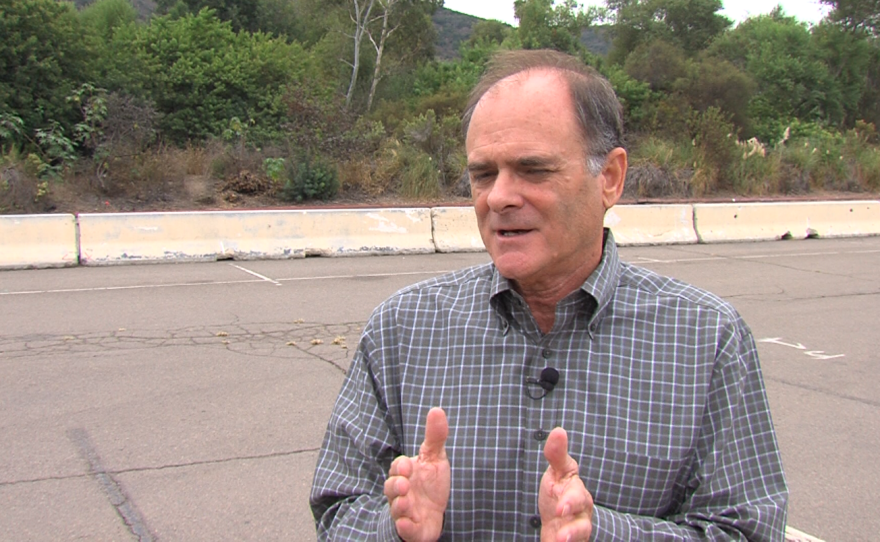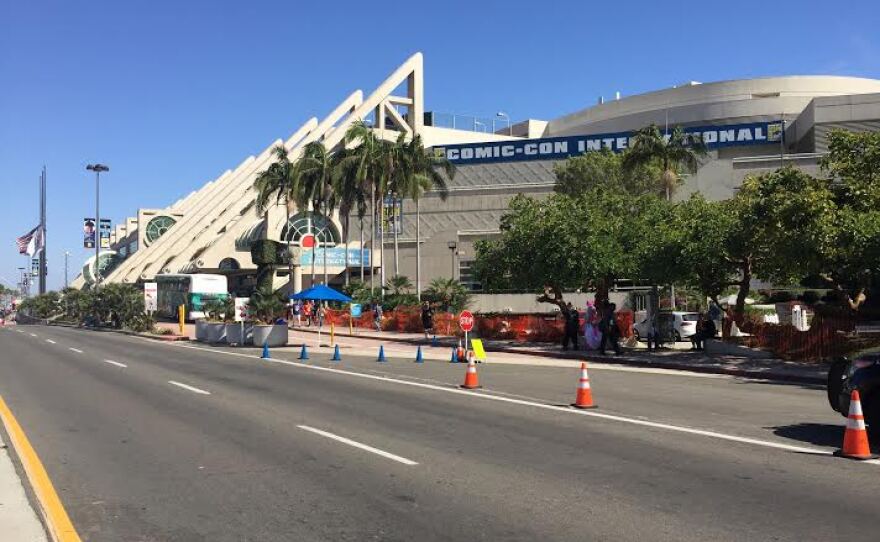UPDATE: 5:53 a.m., Nov. 9, 2016
San Diegans rejected Measure D, which would have redirected tourism financing, barred an onsite expansion of the convention center and set uses for Qualcomm Stadium if it's abandoned by the Chargers.
With 91 percent of the precincts reporting on Wednesday morning, the no vote for the "Citizen's Plan" stood at 60 percent, while the yes vote was 40 percent.
UPDATE: 11:55 p.m., Nov. 8, 2016
The effort to pass a “Citizen’s Plan” that would have targeted some development issues in San Diego is in danger of failing.
The no on Measure D vote stands at 60.2 percent, while the yes vote is 39.7 percent. There are 29 percent of the precincts reporting.
UPDATE: 8:10 p.m., Nov. 8, 2016
Measure D is being rejected in early returns. With 15 percent of the precincts reporting, the no on D vote is 59.9 percent, while yes on D is at 40.1 percent.
Measure D, known as the Citizens’ Plan, would promote and manage the region's tourism industry. The measure raises hotel room taxes from 12.5 percent to 15.5 percent.
Original post:
What is the measure?
Measure D deals with some long-running development issues in San Diego including the convention center, a new sports stadium, and redeveloping the Qualcomm Stadium site. It rests a on a major hike in the city's tourist tax.
Under Measure D, if the Qualcomm Stadium site is ever redeveloped the 160-acre plot of land would become a university-owned research park. Former state lawmaker Steve Peace sees a chance to create a lasting regional treasure.
RELATED: From A To N: A Breakdown Of The Measures On San Diego’s November Ballot
Supporters of Measure D, known as the Citizens’ Plan, say the ballot issue will promote and manage the region's tourism industry. The measure raises hotel room taxes from 12.5 percent to 15.5 percent. It limits potential expansion of the downtown convention center on the bayfront, and it calls for a major renovation of the Qualcomm Stadium site in Mission Valley, should the Chargers leave town.
Measure D, at more than 70 pages, sets guidelines for development in the downtown area and Mission Valley.

"The fundamental core value of Measure D is it increases the city council's bargaining position, the mayor's bargaining position and it protects the taxpayers by setting strict spending limits saying you cannot spend public money on a professional sports facility of any kind," Peace said.
The only guarantee, if the measure passes, is a hike in the transient occupancy tax to 15.5 percent.
That new money gets funneled to the city's general fund where it can pay for any city needs.
"If nothing happens other than the (tourist tax) rate gets set at a rational market rate, that makes sense and treats the public more fairly, that's a good result and I can live with that," Peace said.
Who's on each side?
Measure D was put together by attorney Cory Briggs. He's a major financial backer, as is JMI Realty. Both have loaned the campaign money which has led to a website and some modest web advertising. The region’s hotel industry lined up against the measure donating $100,000 to support Measure D opponents.
The idea had urban planners considering the possibilities.
"So I have very mixed emotions about it because I want to see some of these questions answered," said Michael Stepner, a faculty member at San Diego's New School of Architecture.
Stepner's background is in city planning and he said Measure D addresses some long-running issues in San Diego. He likes the measure’s potential.
"But at the same time," Stepner said, "I want to see the questions answered in not necessarily a ballot box measure. But something that is in context with a lot of other things that are going on."
Stepner's indecision about Measure D is not shared by tourism marketing officials, who don't like the proposal.
The measure changes how they would get funding. Individual hotels would have to opt in to fund tourism marketing and smaller hotels would carry a lighter burden.
Measure D is also getting pushback from the San Diego County Taxpayer's Association. Haney Hong said the measure is incredibly complex.
"And if you were to change any aspect of it, because this is a ballot initiative to change anything would require them to go back to the ballot box," Hong said.
The taxpayer protections are welcome but the association said a sweeping plan like this really demands more public input.
As is, Measure D eliminates flexibility if future city leaders decide to take a different course when it comes to Mission Valley, the convention center or a sports stadium, said Hong.
"But I think that one thing is for certain. Should it pass, there's very likely to be legal disputes around this which then taxpayers would be responsible for covering," Hong said.
Questions have arisen over how many votes the measure needs to pass. Some argue it needs two-thirds support because the measure includes a tax hike. Backers say they only need 50 percent plus one vote because the tax increase goes directly into the general fund and can be spent on anything.
And if things aren't confusing enough, there's the matter of Measure C. It also calls for an increase in the tourist tax to fund a stadium convention center complex downtown.
If both measures pass, the one with the most yes votes goes into effect.






